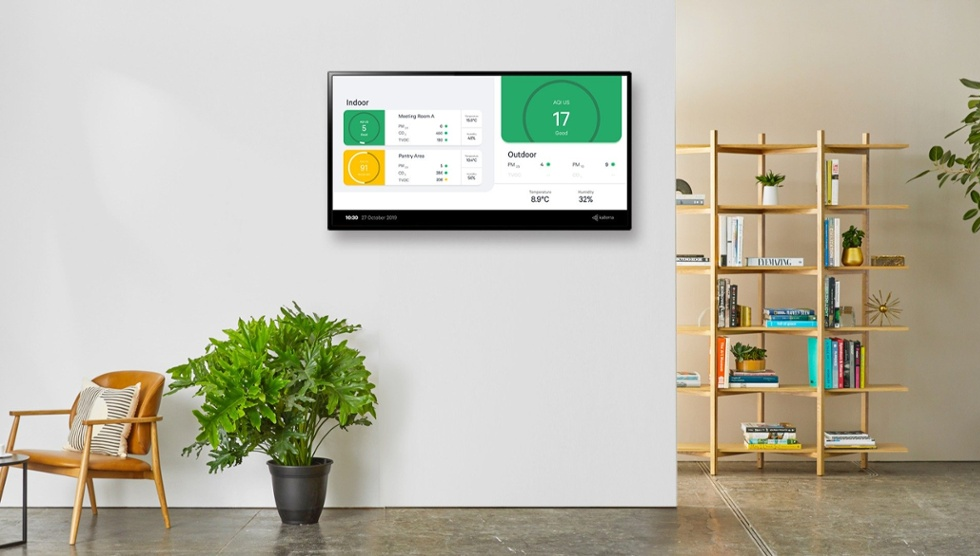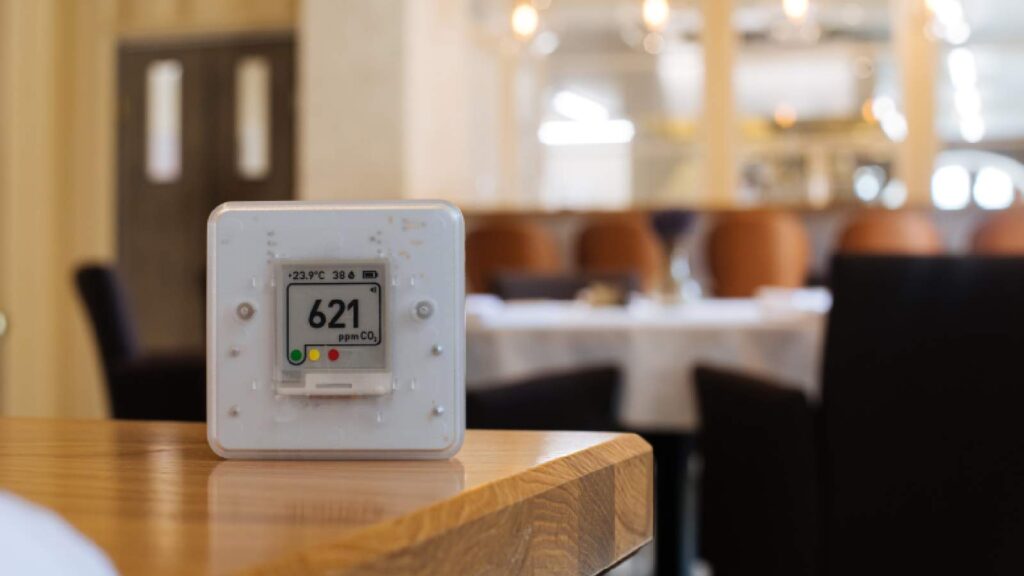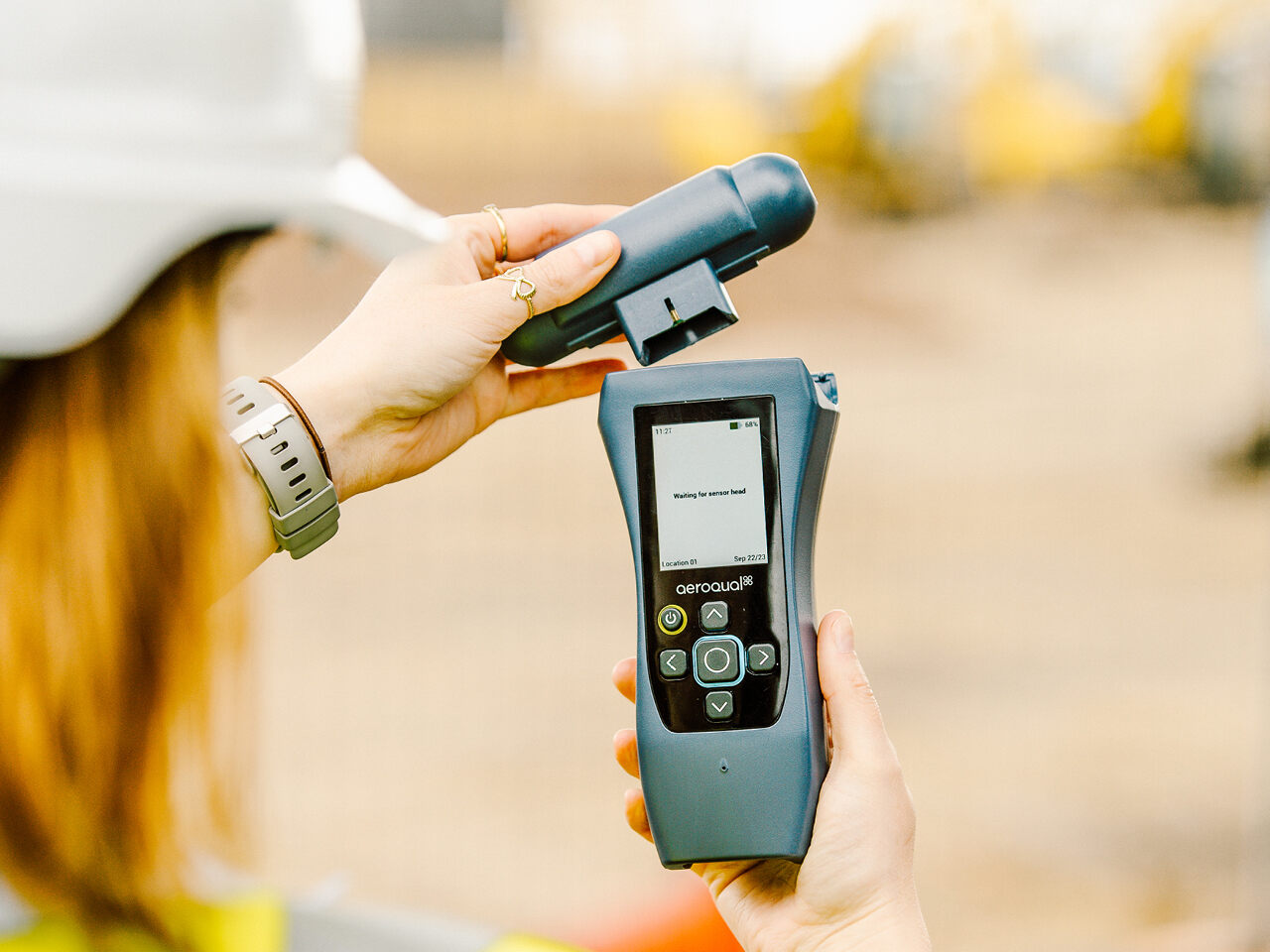Monitoring air quality has become increasingly crucial in today’s world, as the impact of air pollution on human health and the environment has become more evident. Air pollution is a complex mixture of gaseous and particulate matter that can originate from various sources, including transportation, industrial processes, and natural phenomena like wildfires or volcanic eruptions.
The importance of air quality monitoring lies in its ability to detect and measure the levels of common air pollutants, such as particulate matter (PM), ground-level ozone (O3), nitrogen oxides (NOx), sulfur dioxide (SO2), carbon monoxide (CO), and volatile organic compounds (VOCs). These pollutants can have severe consequences for human health, including respiratory issues, cardiovascular diseases, and even premature death.
Furthermore, air pollution has a significant impact on the environment, contributing to climate change, acid rain, and the degradation of ecosystems. Monitoring air quality provides valuable data that can inform policymakers, industries, and individuals about the need for mitigation strategies and preventive measures to reduce emissions and protect public health and the environment.
Table of Contents
Types of Air Quality Monitoring Tools

Air quality monitoring tools come in various forms, designed to measure and track different pollutants and air contaminants in both indoor and outdoor environments. These tools can be broadly categorized into handheld and wearable devices, indoor air quality monitors, outdoor air quality monitors, and professional-grade monitoring equipment.
Handheld and Wearable Air Quality Monitors: These portable devices are designed for personal use and provide real-time air quality readings. They are typically small, lightweight, and easy to carry around, making them ideal for monitoring air quality on the go. Many handheld and wearable monitors can detect common pollutants like particulate matter (PM2.5 and PM10), carbon monoxide, nitrogen dioxide, and volatile organic compounds (VOCs).
Indoor Air Quality Monitors: These devices are specifically designed to monitor the air quality inside buildings, homes, and other enclosed spaces. Indoor air quality monitors can detect a wide range of pollutants, including particulate matter, carbon dioxide, formaldehyde, radon, and various VOCs. Some advanced models also measure temperature, humidity, and other environmental factors that can impact indoor air quality.
Outdoor Air Quality Monitors: These monitors are designed to measure air quality in outdoor environments, such as urban areas, industrial sites, and around major sources of air pollution. Outdoor air quality monitors typically measure pollutants like particulate matter, ozone, nitrogen oxides, sulfur dioxide, and carbon monoxide. Many outdoor monitors are part of larger air quality monitoring networks, providing real-time data to government agencies and the public.
Professional-Grade Air Quality Monitoring Equipment: These are highly sophisticated and accurate instruments used by environmental agencies, research organizations, and industries for comprehensive air quality monitoring and analysis. Professional-grade equipment can measure a wide range of pollutants, including particulate matter, gaseous pollutants, and trace elements, with high precision and sensitivity. These instruments often require specialized training and maintenance and are typically more expensive than consumer-grade monitors.
Indoor Air Quality Monitoring Tools

Indoor air quality monitoring tools are essential for maintaining a healthy indoor environment. These devices measure various pollutants and contaminants that can accumulate indoors, such as particulate matter, volatile organic compounds (VOCs), carbon dioxide, and radon. Common indoor pollutants include mold spores, pet dander, smoke, and off-gassing from building materials and household products.
Some popular indoor air quality monitoring tools include:
- Air Quality Monitors: These devices measure multiple air pollutants simultaneously, providing real-time data on indoor air quality. They often include sensors for particulate matter, VOCs, carbon dioxide, temperature, and humidity.
- Particulate Matter (PM) Monitors: These monitors specifically measure the concentration of fine and coarse particulate matter in the air, which can be harmful to respiratory health.
- VOC Monitors: Volatile organic compounds can cause various health issues, including headaches, dizziness, and respiratory problems. VOC monitors detect the presence and levels of these compounds in indoor air.
- Carbon Dioxide (CO2) Monitors: High levels of carbon dioxide can indicate poor ventilation and air circulation, which can lead to drowsiness, headaches, and decreased productivity. CO2 monitors help ensure adequate fresh air supply.
- Radon Detectors: Radon is a naturally occurring radioactive gas that can seep into buildings from the ground. Long-term exposure to high radon levels increases the risk of lung cancer, making radon detectors crucial for monitoring indoor air quality.
The benefits of using indoor air quality monitoring tools include:
- Identifying and addressing indoor air pollution sources
- Improving ventilation and air circulation
- Reducing exposure to harmful pollutants
- Promoting a healthier indoor environment
- Increasing productivity and well-being for occupants
- Compliance with indoor air quality regulations and standards
By monitoring indoor air quality, individuals and organizations can take proactive measures to mitigate potential health risks and create a safer and more comfortable indoor environment.
Outdoor Air Quality Monitoring Tools
Outdoor air quality monitoring is crucial for assessing and mitigating the impact of various pollutants on the environment and public health. These tools are designed to measure and analyze the levels of common outdoor air pollutants such as particulate matter (PM2.5 and PM10), ozone (O3), nitrogen oxides (NOx), sulfur dioxide (SO2), carbon monoxide (CO), and volatile organic compounds (VOCs).
Outdoor air quality monitoring tools range from simple handheld devices to sophisticated stationary monitoring stations. Some common tools include:
- Particulate Matter Monitors: These devices measure the concentration of fine and coarse particulate matter in the air, which can have adverse effects on respiratory health and contribute to haze and smog.
- Gas Analyzers: These instruments are designed to measure the levels of specific gaseous pollutants like ozone, nitrogen oxides, sulfur dioxide, and carbon monoxide. They often employ techniques such as electrochemical sensors, infrared absorption, or chemiluminescence.
- Air Sampling Systems: These systems collect air samples over a specific period, which are then analyzed in a laboratory setting to determine the concentration of various pollutants.
- Weather Stations: While not directly measuring air quality, weather stations provide valuable data on meteorological conditions like wind speed, wind direction, temperature, and humidity, which can influence the dispersion and concentration of air pollutants.
Outdoor air quality monitoring tools are essential for identifying pollution hotspots, tracking trends, and informing policymakers and the public about air quality levels. By monitoring outdoor air quality, authorities can implement appropriate measures to reduce emissions, issue air quality advisories, and protect vulnerable populations from exposure to harmful pollutants.
Handheld and Wearable Air Quality Monitors
Handheld and wearable air quality monitors are compact and portable devices that allow individuals to monitor the air quality in their immediate surroundings. These tools are designed for personal use and offer real-time data on various air pollutants, making them valuable for those concerned about their exposure to air contaminants.
Portable air quality monitors typically measure particulate matter (PM2.5 and PM10), volatile organic compounds (VOCs), carbon dioxide (CO2), and sometimes other gases like nitrogen dioxide (NO2) and ozone (O3). Some advanced models can even detect specific VOCs, such as formaldehyde, benzene, and toluene.
One of the key advantages of handheld and wearable air quality monitors is their portability. These devices are small enough to fit in a pocket or clip onto clothing, allowing users to carry them wherever they go. This feature is particularly useful for individuals who spend a significant amount of time outdoors or in different environments, such as commuters, cyclists, or outdoor enthusiasts.
Many handheld and wearable air quality monitors are equipped with user-friendly interfaces, often in the form of mobile apps or built-in displays. These interfaces provide real-time air quality readings, allowing users to quickly assess the air quality around them and take appropriate actions if necessary, such as adjusting ventilation or avoiding heavily polluted areas.
While handheld and wearable air quality monitors offer convenience and personal monitoring capabilities, it’s important to note their limitations. These devices are generally less accurate and have a smaller range of pollutant detection compared to professional-grade equipment. Additionally, the accuracy of readings can be affected by factors such as sensor calibration, environmental conditions, and the user’s proximity to pollution sources.
Despite these limitations, handheld and wearable air quality monitors can be valuable tools for raising awareness about air pollution and empowering individuals to make informed decisions about their exposure. By providing real-time data and alerting users to potential air quality issues, these devices can contribute to improved personal health and well-being.
Professional-Grade Air Quality Monitoring Equipment

Professional-grade air quality monitoring equipment is designed for industries, researchers, and environmental agencies that require highly accurate and reliable data. These advanced tools are capable of measuring a wide range of pollutants and environmental parameters with precision and sensitivity.
One of the most commonly used professional-grade air quality monitoring instruments is the ambient air quality monitoring station. These stations are typically equipped with a suite of analyzers and sensors that measure criteria pollutants such as particulate matter (PM2.5 and PM10), nitrogen oxides (NOx), sulfur dioxide (SO2), carbon monoxide (CO), and ozone (O3). They may also include meteorological sensors for wind speed, wind direction, temperature, humidity, and atmospheric pressure.
High-end air quality monitoring stations often feature advanced technologies like chemiluminescence for NOx detection, UV fluorescence for SO2 measurement, and non-dispersive infrared (NDIR) spectroscopy for CO and greenhouse gas analysis. These techniques provide highly accurate and reliable data, making them suitable for regulatory compliance monitoring and research applications.
Another important category of professional-grade air quality monitoring equipment is continuous emission monitoring systems (CEMS). These systems are designed to measure and record emissions from industrial sources, such as power plants, refineries, and manufacturing facilities. CEMS typically employ techniques like Fourier Transform Infrared (FTIR) spectroscopy, gas chromatography, and electrochemical sensors to monitor a wide range of pollutants, including NOx, SO2, CO, CO2, and volatile organic compounds (VOCs).
For specialized applications, such as monitoring air quality in cleanrooms, laboratories, or semiconductor manufacturing facilities, highly sensitive and precise instruments like particle counters, condensation particle counters (CPCs), and optical particle sizers are used. These tools can detect and quantify ultra-fine particles and airborne contaminants with exceptional accuracy, ensuring the maintenance of strict air quality standards.
Professional-grade air quality monitoring equipment often comes with advanced data logging, telemetry, and remote access capabilities, allowing for continuous monitoring and real-time data transmission. Many systems also include built-in data validation, quality assurance, and calibration features to ensure the integrity and reliability of the measurements.
While professional-grade air quality monitoring equipment is typically more expensive than consumer-grade devices, it offers unparalleled accuracy, reliability, and versatility, making it an essential tool for industries, regulatory agencies, and research organizations that require high-quality air quality data.
Air Quality Monitoring Networks and Platforms
Air quality monitoring networks and data sharing platforms play a crucial role in enabling collaborative efforts to measure and track air pollution levels across various locations. These platforms facilitate the integration of data from multiple sources, including government agencies, research institutions, and citizen science initiatives, providing a comprehensive picture of air quality conditions.
One of the key advantages of these networks and platforms is their ability to aggregate data from a wide range of monitoring stations and sensors, allowing for a more comprehensive understanding of air pollution patterns and hotspots. By combining data from different sources, these platforms can identify areas with elevated pollution levels and help inform decision-making processes for air quality management and mitigation strategies.
Collaborative air quality monitoring networks often involve partnerships between government agencies, academic institutions, and community organizations. These partnerships enable the sharing of resources, expertise, and data, fostering a more coordinated approach to air quality monitoring and research. By working together, these stakeholders can leverage their collective knowledge and resources to address air pollution challenges more effectively.
Furthermore, these platforms frequently provide user-friendly interfaces and tools for data visualization and analysis, making air quality information accessible to researchers, policymakers, and the general public. Interactive maps, real-time updates, and historical data trends can help raise awareness about air pollution issues and empower individuals and communities to take action to improve air quality.
In addition to data aggregation and visualization, some air quality monitoring networks and platforms also offer advanced analytical capabilities, such as air quality modeling and forecasting. These tools can help predict future air pollution levels based on various factors, including meteorological conditions, emission sources, and atmospheric chemistry. This information can be invaluable for proactive air quality management strategies and public health advisories.
Overall, air quality monitoring networks and data sharing platforms play a vital role in fostering collaboration, data sharing, and knowledge exchange among various stakeholders. By leveraging the power of collective data and expertise, these platforms contribute to a better understanding of air pollution patterns and support informed decision-making for improving air quality and promoting public health.
Choosing the Right Air Quality Monitoring Tool
Selecting the appropriate air quality monitoring tool is crucial for obtaining accurate and reliable data that aligns with your specific needs. Several factors should be considered when making this decision:
Purpose: Determine the primary purpose of monitoring air quality. Is it for personal use, professional applications, or regulatory compliance? Different tools are designed to cater to varying requirements, such as measuring specific pollutants, providing real-time data, or meeting industry standards.
Accuracy: Evaluate the accuracy and precision of the monitoring tool. Professional-grade equipment generally offers higher accuracy but comes at a higher cost. Consumer-level devices may have lower accuracy but can still provide valuable insights for personal use or awareness purposes.
Pollutants of Interest: Identify the specific pollutants you need to measure, such as particulate matter (PM2.5 and PM10), volatile organic compounds (VOCs), carbon monoxide, nitrogen oxides, or others. Different tools have varying capabilities in detecting and quantifying different pollutants.
Indoor vs. Outdoor Monitoring: Determine whether you need to monitor indoor or outdoor air quality, or both. Indoor air quality monitors are designed for residential or commercial spaces, while outdoor monitors are better suited for ambient air monitoring in urban or industrial areas.
Cost: Air quality monitoring tools can range from affordable consumer-grade devices to expensive professional-grade equipment. Consider your budget and the level of investment you’re willing to make based on your monitoring needs and the required accuracy.
Features and Connectivity: Evaluate additional features such as real-time data streaming, data logging, connectivity options (Wi-Fi, Bluetooth, cellular), mobile app integration, and compatibility with air quality monitoring networks or platforms.
Portability and Power Requirements: If you need to monitor air quality in multiple locations or while on the move, consider the portability and battery life of the monitoring tool. Handheld or wearable devices may be more suitable for such scenarios.
Maintenance and Calibration: Assess the maintenance requirements and calibration needs of the monitoring tool. Professional-grade equipment often requires regular calibration and maintenance by trained personnel to ensure accurate readings.
By carefully considering these factors, you can select an air quality monitoring tool that aligns with your specific needs, budget, and desired level of accuracy, enabling you to make informed decisions and take appropriate actions to improve air quality.
Air Quality Monitoring Best Practices
Effective air quality monitoring requires a strategic approach to ensure accurate data collection, proper interpretation, and actionable insights. Here are some best practices to consider:
Proper Placement and Setup: Position your air quality monitors in strategic locations to capture representative data. Avoid areas with obstructions or interference that could skew readings. Follow manufacturer guidelines for setup and calibration.
Regular Maintenance and Calibration: Regularly maintain and calibrate your air quality monitoring equipment according to the manufacturer’s recommendations. This ensures accurate and reliable data collection over time.
Comprehensive Data Collection: Monitor a range of pollutants and parameters relevant to your specific needs, such as particulate matter (PM2.5 and PM10), nitrogen oxides, sulfur dioxide, carbon monoxide, and volatile organic compounds (VOCs).
Data Logging and Analysis: Implement a robust data logging system to capture and store air quality data over time. Analyze the data to identify patterns, trends, and potential sources of pollution. Use data visualization tools to simplify interpretation.
Establish Baseline Levels: Determine baseline air quality levels for your area by collecting data over an extended period. This will help you identify deviations and potential air quality issues more effectively.
Set Thresholds and Action Levels: Define acceptable air quality thresholds based on relevant guidelines and standards. Establish action levels that trigger specific responses or mitigation measures when pollutant levels exceed these thresholds.
Develop Action Plans: Create detailed action plans outlining the steps to be taken when air quality levels reach concerning levels. These plans should include communication strategies, mitigation measures, and contingency plans for severe air pollution events.
Collaborate and Share Data: Collaborate with local authorities, environmental agencies, and community organizations to share air quality data and coordinate efforts. Participate in air quality monitoring networks and contribute to data-sharing platforms for broader impact.
Continuous Improvement: Regularly review and update your air quality monitoring practices, taking into account new technologies, evolving regulations, and best practices. Continuously strive to improve data accuracy, interpretation, and response strategies.
By following these best practices, you can effectively monitor air quality, interpret data accurately, and develop actionable plans to mitigate air pollution and protect public health.
Future of Air Quality Monitoring Technology
The field of air quality monitoring is rapidly evolving, driven by advancements in sensor technology, data analytics, and the growing demand for real-time, accurate, and comprehensive air quality information. Several emerging technologies and trends are shaping the future of air quality monitoring, promising to revolutionize the way we measure and understand air pollution.
One of the most exciting developments is the emergence of low-cost, high-performance air quality sensors. These sensors, often based on electrochemical, optical, or metal oxide semiconductor technologies, are becoming increasingly accurate, reliable, and affordable. As a result, they are enabling the deployment of dense sensor networks that can provide hyperlocal air quality data at an unprecedented scale.
Another trend is the integration of air quality monitoring with other technologies, such as the Internet of Things (IoT), artificial intelligence (AI), and cloud computing. IoT-enabled air quality monitoring systems can seamlessly collect and transmit data from distributed sensors, while AI and machine learning algorithms can process and analyze this data, identifying patterns, predicting air quality levels, and providing actionable insights.
Moreover, the use of unmanned aerial vehicles (UAVs) or drones for air quality monitoring is gaining traction. Drones equipped with specialized sensors can measure air pollution levels in hard-to-reach areas, such as industrial facilities, construction sites, or remote locations, providing a comprehensive and detailed understanding of air quality conditions.
Additionally, the development of portable and wearable air quality monitors is empowering individuals to take control of their exposure to air pollution. These devices can detect various pollutants and provide real-time alerts, enabling users to make informed decisions about their activities and environments.
Furthermore, the integration of air quality monitoring with other environmental monitoring systems, such as weather stations and climate models, is becoming increasingly important. By combining air quality data with meteorological and climate data, researchers and policymakers can better understand the complex interactions between air pollution, weather patterns, and climate change, enabling more effective mitigation strategies.
As these technologies continue to evolve, we can expect air quality monitoring to become more accurate, comprehensive, and accessible. Real-time air quality data will be widely available, empowering individuals, communities, and policymakers to take proactive measures to reduce air pollution and protect public health.
Conclusion
Air quality monitoring is crucial for maintaining a healthy environment and protecting public health. By utilizing the various tools and technologies available, individuals, communities, and organizations can stay informed about air pollution levels and take necessary actions to mitigate risks.
In summary, the key points covered in this guide include:
- Understanding the different types of air quality monitoring tools, such as indoor, outdoor, handheld, wearable, and professional-grade equipment.
- Evaluating the features and capabilities of each tool to choose the most suitable option for your specific needs.
- Implementing best practices for effective air quality monitoring, including proper setup, calibration, and data analysis.
- Exploring air quality monitoring networks and platforms that provide real-time data and insights.
- Recognizing the future trends and advancements in air quality monitoring technology.
Monitoring air quality is not only essential for personal well-being but also contributes to a sustainable and environmentally-conscious society. By taking proactive measures and utilizing the right tools, we can work towards reducing air pollution, promoting healthier living conditions, and preserving our planet for future generations.
Take action today by researching and investing in the air quality monitoring solutions that best suit your needs. Empower yourself with knowledge and make informed decisions to protect your health and the environment. Together, we can create a cleaner, healthier world for all.



